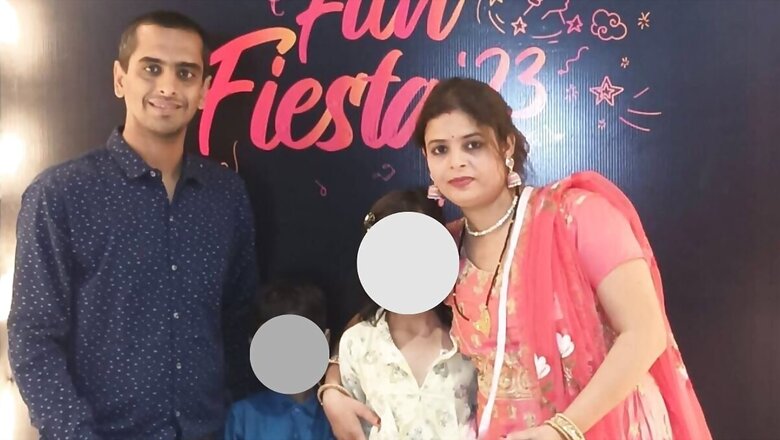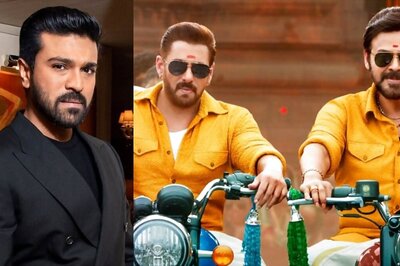
views
Ashutosh and Preeti Jha, residents of Pune, were filled with joy as they welcomed their first child. But, just six months later, their joy turned to worry as their daughter Radhika began feeling tired and looking pale. Doctors diagnosed her with Thalassemia Major, a severe genetic blood disorder. The condition meant that Radhika would need life-long blood transfusions because her body couldn’t produce enough haemoglobin on its own.
“Witnessing our child go through regular blood transfusions at such a tender age and knowing that circle will never end was extremely painful and heart-breaking,” the couple told News18.
According to government data, India tops the world in the number of children with Thalassemia Major, with approximately 1-1.5 lakh diagnosed cases and nearly 4.2 crore carriers of the beta thalassemia trait. As per the government estimates, each year, around 1-1.5 lakh babies are born with Thalassemia Major.
The only way to cure children like Radhika is a bone marrow transplant. However, in Radhika’s case, that too was not possible as the procedure requires the bone marrow of a sibling.
Bone marrow is a soft, spongy tissue found inside certain bones in the body, such as the hip bones, skull, and spine and it’s crucial for the production of blood cells, including red blood cells. A sibling is considered a good match for such a transplant because there is a higher likelihood of genetic compatibility due to the shared genetic heritage of both parents.
The couple then decided to have another child. Two years later, Shivansh was born and seemed healthy during the check-ups but as he turned six months old, he started feeling sick — just like Radhika. He was also diagnosed with Thalassemia Major. “Now, we were facing an even bigger challenge to find a cure for both our children,” Ashutosh, who is an IT professional, said.
“But we were determined not to give up. That’s why when we were given the option of haploidentical bone marrow transplantation (BMT), we accepted it and decided to see what’s written next in our fate.”
Haplo or half-identical bone marrow transplantation is an option when finding fully matched donors is very difficult. “Two centres in Delhi gave us the option and we finally decided to go ahead with one of them.”
The children underwent the transplant at Delhi-based Dharamshila Narayana Hospital where the procedure was conducted by Dr Suparno Chakrabarti, BMT specialist, head and program director – Haploidentical BMT and Dr Sarita Rani Jaiswal, program director for haploidentical BMT at the hospital.
While Chakrabarti was the first doctor to conduct a haploidentical bone marrow transplant in 2010 in India, Jaiswal represents India at multiple forums, including the European BMT Society and the American Society of Blood and Marrow Transplantation.
Following the procedure, in 2018, the father’s bone marrow was transplanted in Radhika, while the mother’s bone marrow was transplanted in Shivansh in 2022.
“Witnessing the success of the procedure on Radhika, the parents wanted the same for Shivansh. But then came the pandemic, which threw a spanner in the plans. However, they persevered, and on January 30, 2022, Preeti donated her bone marrow to Shivansh,” Chakrabarti recalled.
“Now, both children are free from the disease and living a normal life as such transplants do not require life-long immuno-suppressive medicines like other transplants. They are living a normal life,” Jaiswal told News18.
The cost of running such a procedure hovers between approximately Rs 15-Rs 20 lakh but the cost usually depends on a variety of factors, including the age and body weight of the patient and the number of days spent in hospital.
What is “haploidentical” transplant?
It is a relatively recent development in transplantation which involves using bone marrow from a partially matched donor, unlike a normal concept of finding a fully matched donor. The options of donors increase in haploidentical transplants where a parent can also become a donor. According to medical journals, despite the initial challenges posed, this approach has shown promising outcomes, particularly in children.
According to a study conducted in China, of a group of patients who underwent this procedure, 86.4 per cent survived and remained free from the disease for three years, with a small margin of error.
“Haplo-BMT achieved 3-year overall survival and disease-free survival rate of 86.4% (± 0.73%) after a median follow-up of 42 months, indicating its effectiveness as a salvage therapy,” said the study which was published in June 2021.
“These promising outcomes may support haplo-BMT as an alternative treatment strategy for patients with severe aplastic anaemia lacking Human Leukocyte Antigen (HLA)-matched donors.”
Similarly, in the case of Radhika and Shivansh, their parents — although not fully matching with them — were able to come to their rescue.
According to Jaiswal, higher success rates are typically seen in paediatric patients aged below 10 years. “The success rate of such BMT varies depending on several factors, including the specific condition being treated, the age and overall health of the patient, the degree of HLA (Human Leukocyte Antigen) mismatch between the donor and recipient, and the expertise of the medical team performing the procedure.”
Jaiswal explained: “This is one of those transplants where the donor loses nothing. For instance, in a kidney transplant, a donor loses one of his kidneys and in a liver transplant, the donor loses part of the liver. But here, the donor loses nothing and ends up saving lives.”
How is this procedure done?
In this type of procedure, healthy cells from a donor are used to replace the cells that produce faulty haemoglobin. In this case, these healthy cells were sourced from parents.
Initially, high dose chemotherapy is administered to eliminate the bone marrow producing defective haemoglobin-producing cells. Following this, the healthy donated cells are infused into the body through an intravenous (IV) catheter, similar to a blood transfusion. These new cells migrate to the patient’s bone marrow and start the production of healthy blood cells after 2-3 weeks.
The entire transplantation process can extend over weeks to months in the hospital, depending on the time taken for the donor stem cells to start producing viable blood cells and the related complications.
Not a cure for everyone
According to an Indian study conducted by doctors at New Delhi-based BLK Super Speciality Hospital, a haplo-identical transplant is a “feasible option for patients with no available HLA-matched donors”.
However, the study added that a “long-term follow-up is required for a better understanding of outcomes for these patients”.
According to experts, the treating doctors consider the cases closely before advising such transplants as there is a chance of having problems after the transplant because the patient and its donor are not as “closely matched”.
The success of transplants also depends on the expertise of doctors and their teams’ conducting transplants and taking care of patients afterwards.
Stay updated with live coverage of Lok Sabha Election 2024 Phase 3 Voting In Karnataka And Gujarat on our website. Get the latest updates, polling trends, result dates and more.















Comments
0 comment